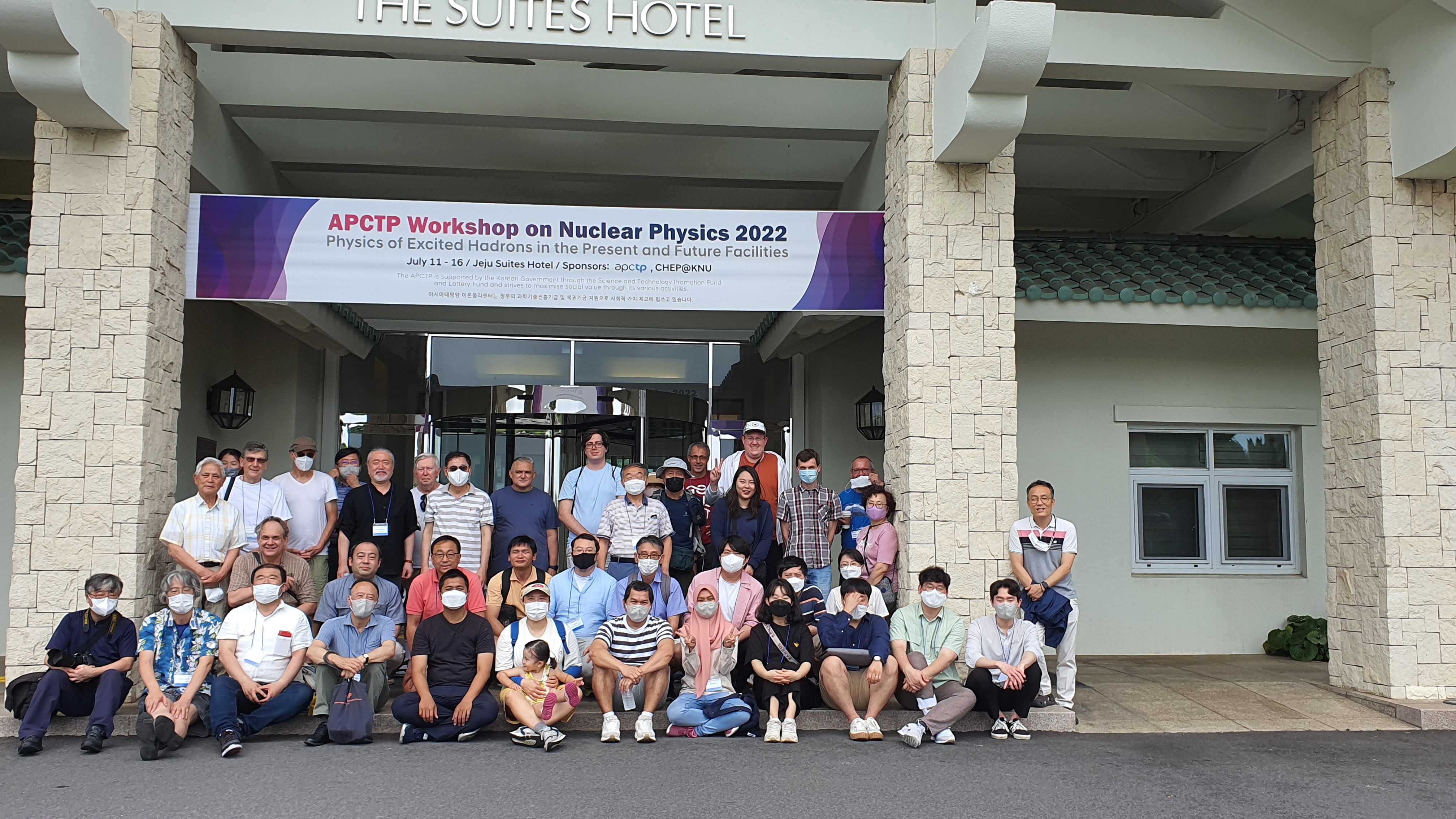APCTP Workshop on Nuclear Physics 2022: Physics of Excited Hadrons in the Present and Future Facilities
Suite Hall
Jeju Suites Hotel
The study of electromagnetic transitions opens a window into the very nature of the strong interaction. And, indeed, such a study of how a ground-state nucleon transitions to an excited state, over a broad range of $q^2$, will provide keen insight into the evolution of how dynamically generated masses emerge from the asymptotically-free, nearly massless quarks of perturbative QCD as well as provide information on the ancillary effects from the meson-baryon cloud. The discussions will include electro- and photo-production measurements (for example, at ELSA, JLab, LEPS, and MAMI), as well as meson-beam data (for example, at GSI, FAIR, and J-PARC), which amply complement the requisite information for baryon spectroscopy. Research topics to be performed in future facilities will also be discussed. Finally, studies of in-medium vector meson spectral function modifications, which are related to the electromagnetic transitions will be addressed as well. A variety of theoretical developments in this field will be discussed in depth. The motivation of this workshop is to share and exchange ideas and research plans for excited hadron among theorists and experimentalists.
This is an in-person meeting. Service for remote participation will not be provided.
If you plan to present your recent research, please submit the title and abstract of your talk through the "Call for Abstracts" page in the menu of the left side.
Deadline of Call for Abstracts: 2022. 6. 10.
Deadline of Registration: 2022. 6. 24.
This workshop will be followed by the APCTP Focus Program from July 18 to 23, 2022, with the title of "Hadron Physics Opportunities with JLab Energy and Luminosity Upgrade". Please visit https://indico.knu.ac.kr/event/566/ for details.
In order to register, you may need to have an account with our indico system. If you do not have an account with us, you can open one by clicking "Login" button in the upper right corner. Then you can find the button for "create one here". Once you login, you can continue registration process. If you have any problems, please let us know.
Phone numbers
Jeju Suites Hotel : 064-738-3800
Jeju Bloom Hotel: 064-738-7000
Sponsors
Asia Pacific Center for Theoretical Physics

Center for High Energy Physics, Kyungpook National University



